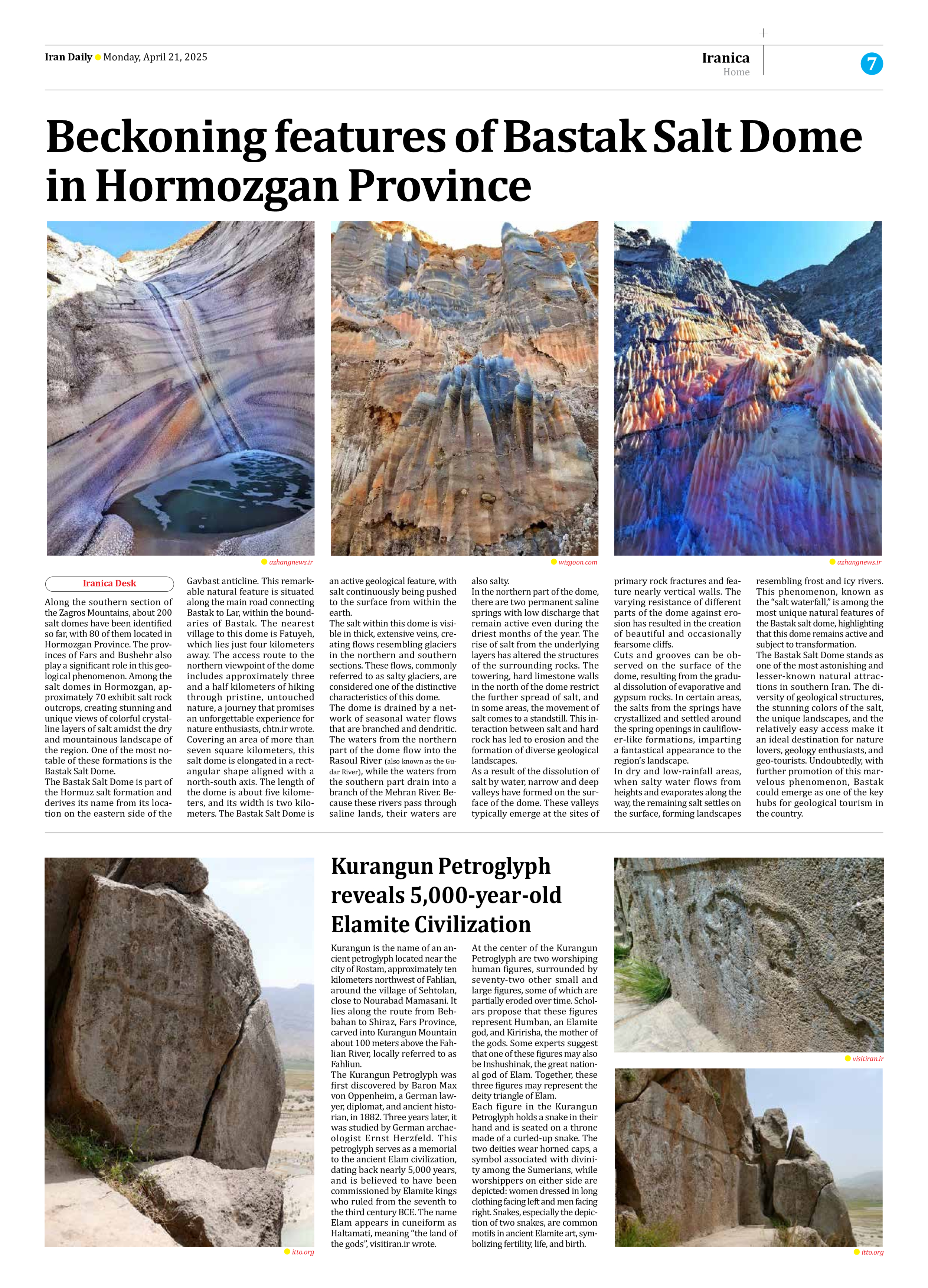
Beckoning features of Bastak Salt Dome in Hormozgan Province
Along the southern section of the Zagros Mountains, about 200 salt domes have been identified so far, with 80 of them located in Hormozgan Province. The provinces of Fars and Bushehr also play a significant role in this geological phenomenon. Among the salt domes in Hormozgan, approximately 70 exhibit salt rock outcrops, creating stunning and unique views of colorful crystalline layers of salt amidst the dry and mountainous landscape of the region. One of the most notable of these formations is the Bastak Salt Dome.
The Bastak Salt Dome is part of the Hormuz salt formation and derives its name from its location on the eastern side of the Gavbast anticline. This remarkable natural feature is situated along the main road connecting Bastak to Lar, within the boundaries of Bastak. The nearest village to this dome is Fatuyeh, which lies just four kilometers away. The access route to the northern viewpoint of the dome includes approximately three and a half kilometers of hiking through pristine, untouched nature, a journey that promises an unforgettable experience for nature enthusiasts, chtn.ir wrote.
Covering an area of more than seven square kilometers, this salt dome is elongated in a rectangular shape aligned with a north-south axis. The length of the dome is about five kilometers, and its width is two kilometers. The Bastak Salt Dome is an active geological feature, with salt continuously being pushed to the surface from within the earth.
The salt within this dome is visible in thick, extensive veins, creating flows resembling glaciers in the northern and southern sections. These flows, commonly referred to as salty glaciers, are considered one of the distinctive characteristics of this dome.
The dome is drained by a network of seasonal water flows that are branched and dendritic. The waters from the northern part of the dome flow into the Rasoul River (also known as the Gudar River), while the waters from the southern part drain into a branch of the Mehran River. Because these rivers pass through saline lands, their waters are also salty.
In the northern part of the dome, there are two permanent saline springs with low discharge that remain active even during the driest months of the year. The rise of salt from the underlying layers has altered the structures of the surrounding rocks. The towering, hard limestone walls in the north of the dome restrict the further spread of salt, and in some areas, the movement of salt comes to a standstill. This interaction between salt and hard rock has led to erosion and the formation of diverse geological landscapes.
As a result of the dissolution of salt by water, narrow and deep valleys have formed on the surface of the dome. These valleys typically emerge at the sites of primary rock fractures and feature nearly vertical walls. The varying resistance of different parts of the dome against erosion has resulted in the creation of beautiful and occasionally fearsome cliffs.
Cuts and grooves can be observed on the surface of the dome, resulting from the gradual dissolution of evaporative and gypsum rocks. In certain areas, the salts from the springs have crystallized and settled around the spring openings in cauliflower-like formations, imparting a fantastical appearance to the region’s landscape.
In dry and low-rainfall areas, when salty water flows from heights and evaporates along the way, the remaining salt settles on the surface, forming landscapes resembling frost and icy rivers. This phenomenon, known as the “salt waterfall,” is among the most unique natural features of the Bastak salt dome, highlighting that this dome remains active and subject to transformation.
The Bastak Salt Dome stands as one of the most astonishing and lesser-known natural attractions in southern Iran. The diversity of geological structures, the stunning colors of the salt, the unique landscapes, and the relatively easy access make it an ideal destination for nature lovers, geology enthusiasts, and geo-tourists. Undoubtedly, with further promotion of this marvelous phenomenon, Bastak could emerge as one of the key hubs for geological tourism in the country.







